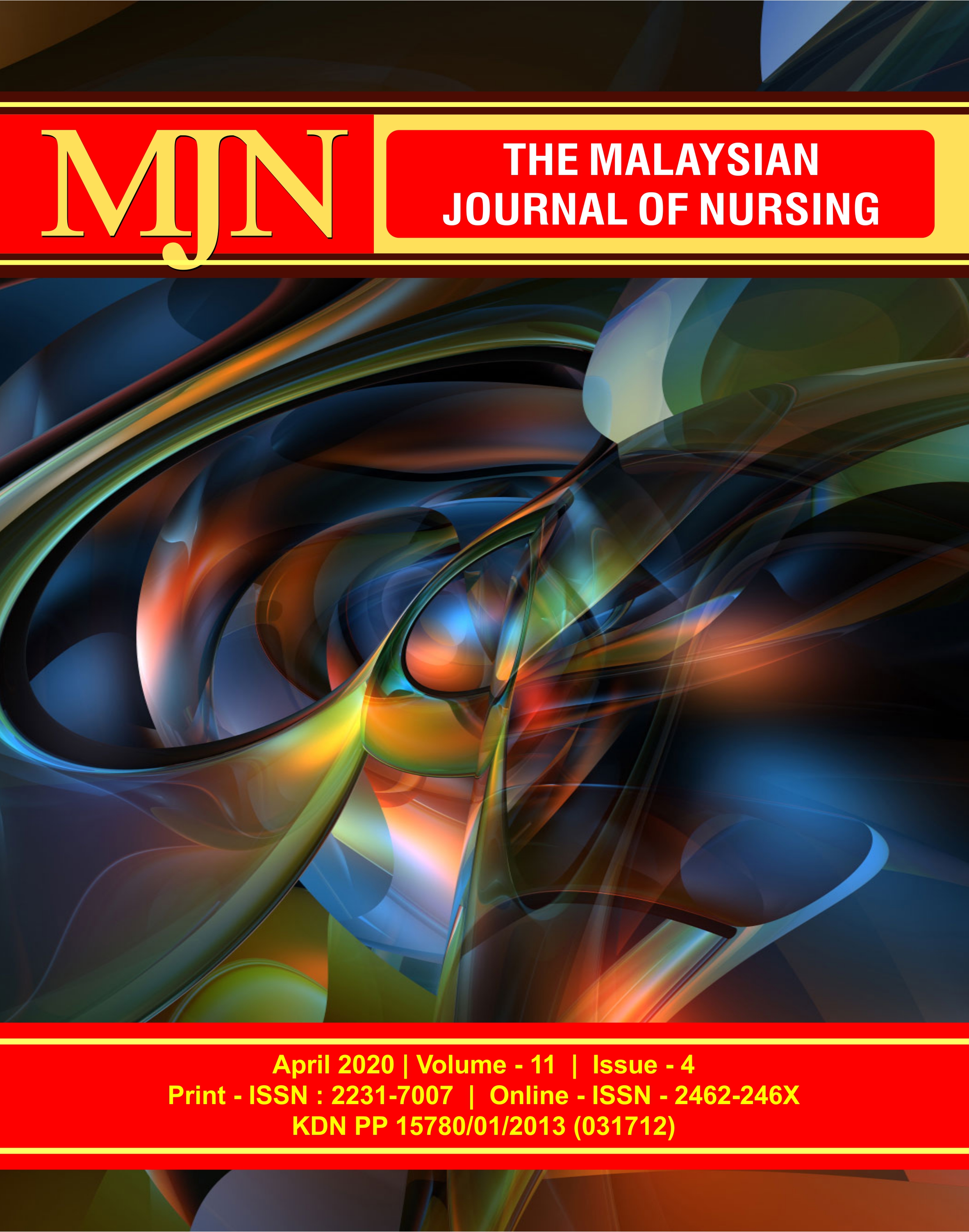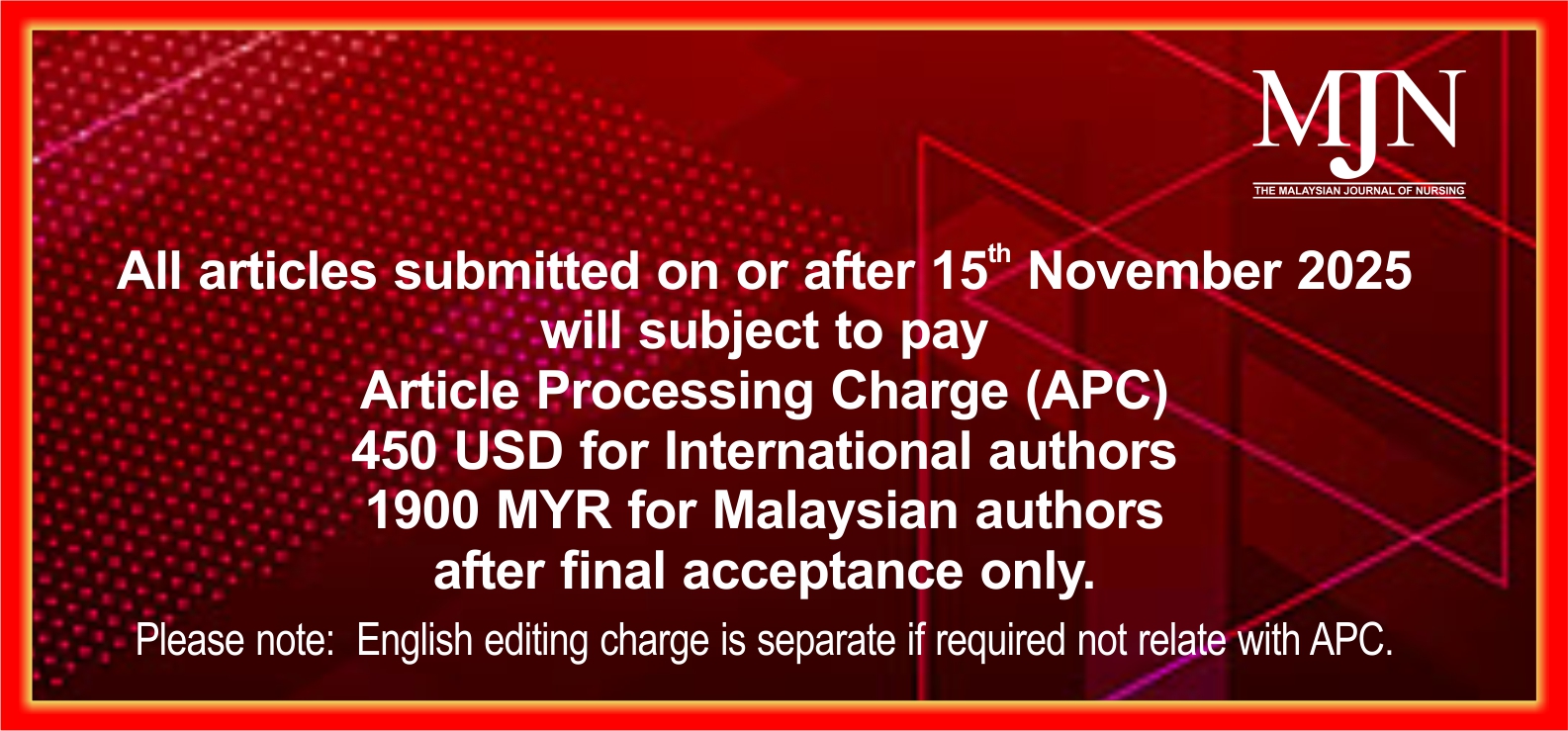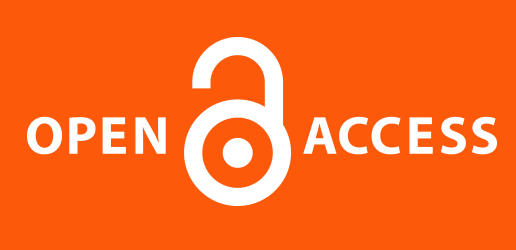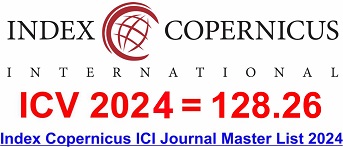FROM AGONY TO ADAPTATION: JOURNEY OF MOTHERS AS PRIMARY CAREGIVER FOR THEIR CHILDREN WITH PDA
DOI:
https://doi.org/10.31674/mjn.2020.v11i04.003Abstract
A mother’s love for her child knows no limit. Her role as a primary caregiver depicts her genuine love to her child when it comes to health-related issues especially the involvement of a vital organ such as the heart. This situation is alarming to the mother since the child would manifest dyspnea and a murmur called “Gibson’s murmur” which may be heard using a stethoscope. This type of Congenital Heart Defect (CHD) is called Patent Ductus Arteriosus (PDA). It is the sixth most common CHD and unsuccessful closure of PDA appeared to be dangerous which raised a mortality rate of 70% in contrast with 11% infants who underwent an effective closure. This study utilized the qualitative phenomenological design particularly Husserlian phenomenology. The research was conducted in Cebu, Philippines. Purposive and snowball sampling technique were utilized by means of referral by a pediatric cardiologist. There were 10 Key Informants and their real names were not used in observance of their privacy and confidentiality. Prior to the conduct of the study, the researcher underwent bracketing of ideas, opinions and biases to prevent undesirable effects in the research process. Before the actual interview, the tool was pilot tested to three key informants with a child who underwent operation for the treatment of CHD. The study used a researcher-made, semi-structured interview guide and open-ended questions were utilized. One on one interview was implemented by the researcher in their preferred place. Consent was given voluntarily by the key informants and without coercion. The researcher followed the steps of analysis as proposed by Colaizzi. A scheduled follow-up appointment was made by the researcher and key informants for the validation of results. The clustered themes were: (1) Agony: a struggle before operation; Sub-theme 1: Fear of the unknown; Sub-theme 2: Sadness and Denial; Subtheme 3: Financial challenge: a difficult task; Sub-theme 4: Caring challenges; (2) Ambivalence: a mixed feelings during operation; (3) Alleviation; a mother’s relief after operation; (4) Altruism: a selfless love; and (5) Adaptation: internal and external support; Sub-theme 1: Prayer: the powerful key to coping; Sub-theme 2: Financial support; and Sub-theme 3: Social support.
Keywords:
PDA, Altruism, Adaptation, Descriptive Phenomenology, Qualitative Research, ColaizziDownloads
References
Alampay, L.P. & Jocson, R.M. (2011). Attributions and Attitudes of Mothers and Fathers in the Philippines. Parenting, Science and Practice, 11(2-3), pp 163-176.
American Heart Association (2018). Patent Ductus Arteriosus (PDA). Retrieved from:https://www.heart.org/en/health-topics/congenital-heart-defects/about-congenital-heart- defects/patent-ductus-arteriosus-pda
Amoozgar, H., Salehi, S., Farhadi, P., Edraki, M.R., Borzoee, M., Ajami, G., Cheriki, S. & Mohammadi, H. (2016). Follow-Up Results of Device Occlusion of Patent Ductus Arteriosus. Iranian Journal of Pediatrics, 26(3), pp 3621.
Azhar, A.S., Abd El-Azim, A.A. & Habib H.S. (2009). Transcatheter closure of patent ductus arteriosus: Evaluating the effect of the learning curve on the outcome. Annals of Pediatric Cardiology, 2(1), pp 36-40.
Barreto, T.S.M., Sakamoto, V.T.M., Magagnin, J.S., Coelho, D., Waterkemper, R. & Canabarro,
S.T. (2016). Experiences of parents of children with congenital heart disease: feelings and obstacles. Revista da Rede de Enfermagem do Nordeste, 17(1), pp 128-136.
Behjati-Ardakani, M., Behjati-Ardakani, M., Hosseini, S. & Noori, N. (2013). Long-Term Results of Transcatheter Closure of Patent Ductus Arteriosus in Infants Using Amplatzer Duct Occluder. Iranian Journal of Pediatrics, 23(4), pp 411-416.
Bhatia, J. & Dice, J.E. (2007). Patent Ductus Arteriosus: An Overview. Journal of Pediatric Pharmacology and Therapeutics, 12(3), pp 138-146.
Bruce, E., Lilja, C. & Sundin, K. (2014). Mothers' lived experiences of support when living with young children with congenital heart defects. Journal for Specialists in Pediatric Nursing, 19(1), pp 54-67.
Cheng, D.D., Ortiz, E.E. & Angtuaco, J.L. (2013). A single-blind randomized controlled trial comparing the efficacy of two doses of oral ibuprofen with intravenous indomethacin in terms of ductus arteriosus closure among premature infants with patent ductus arteriosus: A phase 2A clinical trial. Acta medica Philippina, 46(4), pp 51-55.
David-Padilla, C., David-Padilla, C., Dion-Berboso, A., Abadingo, M.E., Ty, K.S., Tumulak, M. R., Sur, A.L.D., Cutiongco-de la Paz, E.M. & Cutiongco-de la Paz E.M. (2011).Occurrence of birth defects at the Philippine General Hospital: 2001-2010. Acta Medica Philippina, 45(4), pp 20-29.
Department of Health (2010). The 2010 Philippine Health Statistics. National Epidemiology Center. Statistics and Publication Section. Republic of the Philippines, Manila.
Dutta, S., Mihailovic, A., Benson, L., Kantor, P.F., Fitzgerald, P.G., Walton, J.M., Langer, J.C. & Cameron, B.H. (2008). Thoracoscopic ligation versus coil occlusion for patent ductus arteriosus: a matched cohort study of outcomes and cost. Surgical Endoscopy. Surgical Endoscopy, 22(7), pp 1643-1648.
Engür, D., Deveci, M & Türkmen, M.K. (2016). Early Signs that predict later haemodynamically significant patent ductus arteriosus. Cardiology in the Young, 26(3), pp 439-445.
Esfahanizadeh, J., Alizadeh, K., Tabari, M., Izanloo, A., Yaghobi, K. & Najafi, M.N. (2017). Results of the Patent Ductus Arteriosus Closure Using the Video-Assisted Thoracoscopic Surgery. Iranian Journal of Pediatrics, 27 (3), pp 9916.
Franich-Ray, C., Bright, M.A., Anderson, V., Northam, E., Cochrane, A., Menahem, S. & Jordan, B. Trauma reactions in mothers and fathers after their infant's cardiac surgery. Journal of Pediatric Psychology, 38(5), pp 494-505.
Gregory, C. (2019). The Five Stages of Grief: An Examination of the Kubler-Ross Model. PSYCOM. Retrieved from: https://www.psycom.net/depression.central.grief.html
Holland, J.M. (2014). Elisabeth Kübler-Ross. In book: The A-Z of death and dying: Social, medical, and cultural aspects, USA: ABC-CLIO, Editors: M. Brennan, pp 286-288.
Jannatdoust, A., Samadi, M., Yeganehdoust, S., Heydarzadeh, M., Alikhah, H., Piri, R. & Naghavi-Behzad, M. (2014). Effects of intravenous indomethacin on reduction of symptomatic patent ductus arteriosus cases and decreasing the need for prolonged mechanical ventilation. Journal of Cardiovascular and Thoracic Research, 6(4), pp 257-259.
Jin, M., Liang, Y.M., Wang, X.F., Guo, B.J., Zheng, K., Gu, Y. & Lyu, Z.Y. (2015). A
Retrospective Study of 1,526 Cases of Transcatheter Occlusion of Patent Ductus Arteriosus.Chinese Medical Journal (English), 128(17), pp 2284-2289.
Jordan, B., Franich-Ray, C., Albert, N., Anderson, V., Northam, E., Cochrane, A. & Menahem, S. (2014). Early mother-infant relationships after cardiac surgery in infancy. Archives of Disease in Childhood, 99(7), pp 641-645.
Kang, S.L., Samsudin, S., Kuruvilla, M., Dhelaria, A., Kent, S. & Kelsall, W.A. (2013). Outcome of patent ductus arteriosus ligation in premature infants in the East of England: a prospective cohort study. Cardiology in the Young, 23(5), pp 711.
Kübler-Ross, E., Wessler, S. & Avioli, L.V. (1972). On death and dying. JAMA, 221(2) pp 174- 9.
Lan, S‐F., Mu, P‐F. & Hsieh, K‐S. (2007). Maternal experiences making a decision about heart surgery for their young children with congenital heart disease. Journal of Clinical Nursing, 16(12), pp 2323-2330.
Lázaro, C.P. & Pondé, M.P. (2017). Narratives of mothers of children with autism spectrum disorders: focus on eating behavior. Trends in Psychiatry & Psychotherapy, 39(3), pp 180-187.
Leifer, G. (2014). Introduction to Maternity and Pediatric Nursing. 7th Edition, Saunders, United States of America.
Lumsden, M.R., Smith, D.M. & Wittkowski, A. (2011). Coping in Parents of Children with Congenital Heart Disease: A Systematic Review and Meta-synthesis. Journal of Child and Family Studies, 28, pp 1736–1753.
Mellow, T. (2014). Bonding Experiences in Mothers of Infants with Severe Congenital Heart Disease. Thesis, University of London, London.
Merriam-Webster Dictionary (2018). Retrieved from: https://www.merriam- webster.com/dictionary/dictionary
Morrow, R., Rodriguez, A. & King, N. (2015) Colaizzi’s descriptive phenomenological method.The Psychologist, 28(8), pp 643-644.
Ofiaza, S.R., Marcelo, J., Ang, J. & Rosario J.D. (2008). Outcome of patients with patent ductus arteriosus following surgery at the Philippine children's medical center from January 1998 to September 2006. Philippine Children's Medical Center Journal, 7(1), pp 57-61.
Philippine Statistics Authority (2004). Philippines – Vital Statistics Report on Deaths in the Philippines. Retrieved from: http://psa.gov.ph/psada/index.php/catalog/61/variable/V33
Polit, D.F. & Beck, C.T. (2017). Essentials of Nursing Research: Appraising Evidence for Nursing Practice, Lippincott Williams & Wilkins (LWW), Philadelphia.
Quaye, E. (2011). A Qualitative Study of the Everyday Life Experiences of Working Mothers and their Children in Accra, Ghana. Master Thesis, Institute of Psychology, Norwegian University of Science and Technology, Trondheim.
Rathke, J., Menezes, H.S. & Filho, R.I.R. (2014). Percutaneous Occlusion of Patent Ductus Arteriosus. Revista Brasileira de Cardiologia Invasiva, 22(4), pp 364-368.
Re, J., Dean, S & Menahem, S. (2013). Infant cardiac surgery: mothers tell their story: a therapeutic experience. World Journal for Pediatric and Congenital Heart Surgery, 4(3), pp 278- 285.
Sabzevari, S., Nematollahi, M., Mirzaei, T. & Ravari, A. (2016). The Burden of Care: Mothers’ Experiences of Children with Congenital Heart Disease. International Journal of Community Based Nursing & Midwifery, 4(4), pp 374-385.
Sabzevari, S., Nematollahi, M., Mirzaei, T. & Ravari, A. (2016). The Burden of Care: Mothers' Experiences of Children with Congenital Heart Disease. International Journal of Community Based Nursing & Midwifery, 4(4), pp 374-385.
Shosha, G.A. (2012). Employment of Colaizzi's Strategy in Descriptive Phenomenology: A Reflection of a Researcher. European Scientific Journal, 8(27).
Sira, N., Desai, P.P., Sullivan, K.J. & Hannon, D.W. (2014). Coping Strategies in Mothers of Children with Heart Defects: A Closer Look into Spirituality and Internet Utilization. Journal of Social Service Research, 40(5).
Vallejos, L.M. (2015). Shattered: A heuristic self-search inquiry of one mother's journey to wholeness after a child's diagnosis of a potentially fatal congenital heart defect. ProQuest Dissertations Publishing, Saybrook University, California, USA.
Wei, H. (2015). The Experiences and Care Needs of Parents Whose Children are Born with Congenital Heart Disease. Dissertation, University of North Carolina, USA.
Yapakçı, E., Ecevit, A., Törer, B., Ince, D.A., Gökdemir, M., Gülcan, H. & Tarcan, A. (2014). "Shunt index" can be used to predict clinically significant patent ductus arteriosus in premature neonates in early post-natal life. Cardiology in the Young, 24(4), pp 605-609.
Yıldırım, N. (2016). A Qualitative Analysis of Altruism (Selflessness): Views of Headmasters in Turkey. Journal of Education and Training Studies, 4(7), pp 82-91.
Published
How to Cite
Issue
Section
License

This work is licensed under a Creative Commons Attribution-NonCommercial-NoDerivatives 4.0 International License.



































